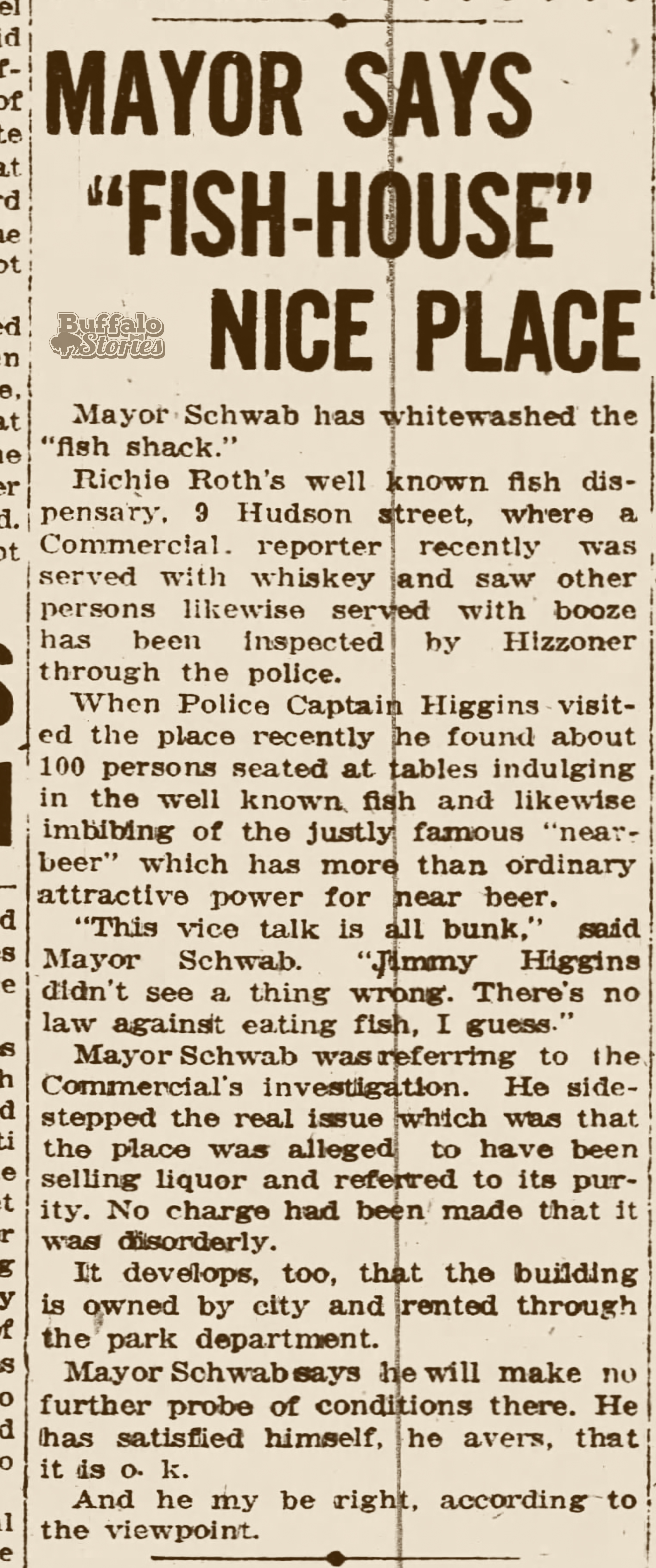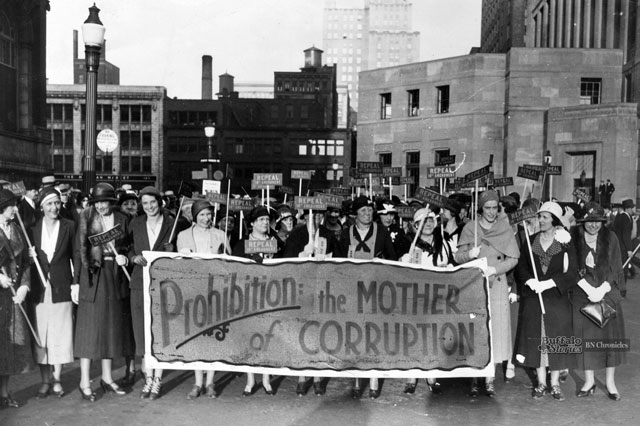 By Steve Cichon
By Steve Cichon
steve@buffalostories.com
@stevebuffalo
If you’re visiting the City of Tonawanda these days, taking a nice ride from, say, Gateway Harbor – the home of Canal Fest and summertime concerts – over to Old Man River for a hot dog and an ice cream, you might not realize the trip includes passage through what was once one of Western New York’s most infamous red light districts.

The area that’s now home to a Tops Market and the police station was once known as “Goose Island,” a small man-made island formed when the Erie Canal cut off a triangle of land from the rest of the city bounded on the other sides by Tonawanda Creek and the Niagara River.
It’s no surprise that Tonawanda’s expansive lumber industry eventually made use of the island, but initially it was developed with residences for more well-to-do Tonawandans.

Tonawanda Mayor Christ S. Warren was born on Goose Island in 1879, when the Tonawandas were the world’s largest freshwater lumber port. As a boy, he helped his grandfather operate a grocery store which catered to the canalers.
“Many a morning I got up at 3 o’clock to drive a team and a covered wagon to the Buffalo market for supplies,” an 81-year-old Warren remembered in a 1960 interview.
But times changed. There were several destructive fires there in the early 1890s. In 1899, speculators bought up much of Goose Island as it was named as a possible site for a series of docks for lumber and grain ships – but those docks were ultimately built on Buffalo’s Squaw Island.
Whether it was a direct result of that crazed land buying gone bust or not, over the next 20 years, Goose Island became known as a “notorious district,” made up of “disorderly houses.”
“Goose Island has had a shady reputation for years,” reported the Buffalo Times, “and had come to be well-known throughout this section of the country because of the escapades credited to many persons visiting it.”
The infamous area was commonly referenced in divorce proceedings of the time. Mrs. Lumley was granted a divorce after her husband was fingered as “one of three boon fellows” joined by “buxom women companions” at a “wild party” on Goose Island in 1925.
It was around the same time that Erie County Sheriff Frank A. Tyler called the conditions on Goose Island “downright immoral,” and threatened that if Tonawanda Police wouldn’t clean up the place, he’d send deputies to “remove this stigma from Erie County.”
After a late night visit to the district Tyler told the Buffalo Courier, “I have positive evidence that women are soliciting openly in the streets.” He went on to quote letters from parents who said their sons and daughters were “ruined” by visits to the district.
Despite “more than 20 houses of ill-repute operating with two to four women attached to each house,” Goose Island hotel owner Philip Perew said he’d been living on the island for years and saw no problems with conditions there.
“Everybody knows what Goose Island is for,” said Perew, who lived on Sweeney Street.
“A survey of Goose Island yesterday by a reporter revealed there are two streets in which nearly every house contains two or three women wearing gaudy dresses and having highly painted faces,” reported the Buffalo Courier. “The women make no secret of their business and laugh at reports of the impending cleanup.”
Aside from the vice, “the free flow of intoxicating liquor” was also a problem there during the height of Prohibition. In some quarters, Goose Island was known as “the wettest spot in New York State.” A Buffalo man was arrested in 1925 driving a truck with 30 barrels of beer on River Road. Often that beer didn’t make it too far– plant operators on “the island” had a difficult time keeping employees sober. As many as 500 people a night were visiting the Goose Island “resorts.”
The drinking and prostitution both were open secrets. That lead to the 1936 arrest and trial of a sheriff’s deputy accused of trying to extort money from Perew and other “Goose Island resort operators.”
Tighter policing through the 1930s saw the decline of the area as a prostitution center, as arrest rosters showed people with nicknames like “Tiger Lilly” and “Tony the Wop.” The filling in of the canal along Niagara Street during that decade also reconnected the island to the rest of the city.

Urban renewal efforts of the 1960s further wiped any remnants of Goose Island off the map. Planners bragged efforts in a 45-acre parcel downtown, where all the wooden frame buildings – many dating back to the 1860s – were to be replaced with modern brick and concrete structures.
“When the project is completed in January 1968,” predicted Urban Renewal Perry A. Wilson, “Tonawanda will be one of the most modern and beautiful cities in Western New York.”

With that work, the old Goose Island – and years of illicit history in the City of Tonawanda – was plowed under.
Though the following was written during one of the earlier crackdowns that didn’t quite last, this 1918 reflection in the Buffalo Times sums up the end of Goose Island well.
“The passing of the island as a ‘red light district’ with painted women thus marks the elimination of a spot that for a long time has been a thorn in the side of respectable residents of Tonawanda.”









